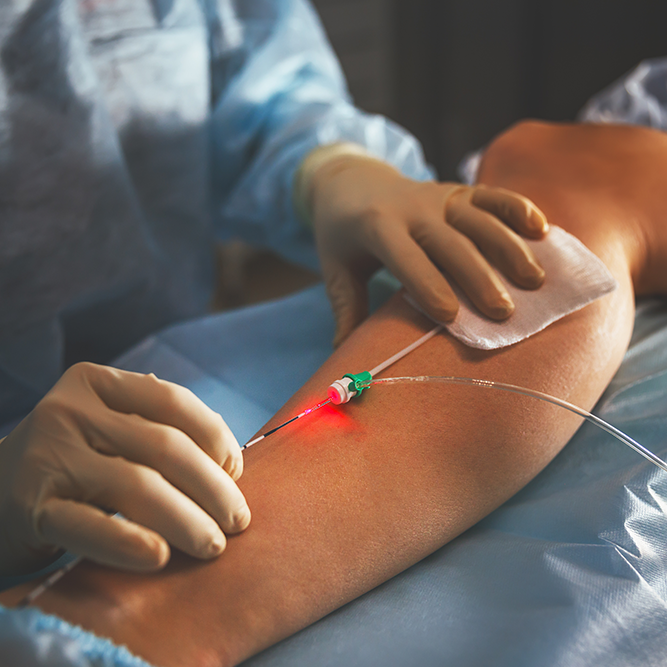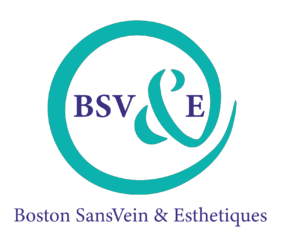VNUS Closure FAQ
What is the VNUS Closure procedure?
The VNUS Closure procedure is a minimally invasive treatment alternative for patients with a condition known as superficial venous reflux, which often results in varicose veins and other painful symptoms. Approximately 25 million people suffer from venous reflux.
Who should consider VNUS Closure?
The Closure System is intended for endovascular coagulation of blood vessels in patients with superficial venous reflux (backward flow of blood through the veins).
Who should not consider VNUS Closure?
Contraindications for VNUS Closure are patients with a pacemaker or internal defibrillator and patients with thrombus (blood clot) in the vein segment to be treated.
What are varicose veins?
Your legs are made up of a network of veins. A healthy vein contains valves which open and close to assist the return of blood to the heart. Varicose veins are caused by damaged or diseased valves which result in backward flow of blood in your legs, a condition known as venous reflux. Venous reflux can cause blood to pool in your legs and lead to symptoms such as pain, swelling, itching, and varicose veins.
What happens during the VNUS Closure procedure?
The VNUS Closure procedure, an alternative treatment option to traditional vein stripping surgery, brings state-of-the-art technology to an age old disease.
The procedure is an outpatient treatment. Local anesthesia is used to numb the treatment area. You will receive pre-op pain medications and anti-anxiety drugs 30 minutes before the procedure.
The vein is accessed percutaneously and a small incision is performed. The catheter delivers radiofrequency (RF) energy to the vein wall, causing it to heat, collapse and seal shut. Once the diseased vein is closed, other healthy veins take over and empty blood from your legs. As normal return flow is reestablished, your symptoms should improve considerably.
Following the procedure, the catheter is removed and a band-aid is placed over the insertion site. You should refrain from long periods of standing immediately following the procedure to help speed your recovery. Many patients resume normal activities within 1-2 days.
What are some of the benefits of VNUS Closure?
Some benefits of VNUS Closure procedure to treat varicose veins include the following:
- Relief of symptoms
- Short recovery
- Resume normal activities within 1-2 days
- Office procedure
- Local anesthesia
- Good cosmetic outcome with minimal scars
Is the procedure painful?
Patients who undergo VNUS Closure report feeling some pain and burning during the administration of the local anesthesia prior to the procedure. After the local is given, during the Closure procedure, the patient may experience some heat.
How is the VNUS Closure procedure different than stripping?
During the stripping procedure, the surgeon makes an incision in your groin and ties off the veins, after which a stripper tool is threaded through the saphenous vein and used to pull the vein out of your leg through a second incision. In the Closure procedure, there is no need for stripping; instead, the vein remains in place and is closed using a special (Closure) catheter inserted through a small incision. This minimizes the bruising and pain often associated with vein stripping (i.e., this may result from tearing of side branch veins while the saphenous vein is pulled out). Vein stripping is usually performed in an operating room, under general anesthetic, while the Closure procedure is typically performed using local anesthesia.
How quickly after treatment can I return to normal activities?
Many patients can resume normal activities within 1-2 days after the VNUS Closure procedure. For a few weeks following the treatment, you should being a regular walking regimen and refrain from very strenuous activities (heavy lifting, for example) or prolonged periods of standing. You can exercise strenuously again two weeks after the VNUS Closure.
How soon after treatment will my symptoms improve?
Most patients report noticeable improvement in their symptoms in the 1-2 weeks following the VNUS Closure procedure.
After the VNUS Closure procedure, will there be scarring, bruising, swelling or numbness?
Patients report minimal scarring, bruising or swelling following the Closure procedure. Most of this is seen in the first 2-4 weeks, if at all. Some numbness may be experienced at the groin level and medial thigh and knee. This usually resolves. It may take 1-6 months.
When can I fly after VNUS Closure?
Typically, you can get on an airplane 3-6 weeks after the Closure procedure, depending on the duration of the flight.
What are potential risks and complications of VNUS Closure?
Potential complications include, but are not limited to the following:
- Vessel perforation
- Thrombosis (blood clot)
- Pulmonary embolus (blocked artery)
- Phlebitis (vein inflammation)
- Hematoma
- Infection
- Paresthesia
- Numbness
- Skin burns (resulting from treatment of veins located very close to the skin surface)
Paresthesia may occur from thermal damage to adjacent sensory nerves. The risk of paresthesia is higher with treatment below the calf.


Boston SansVein & Esthétiques: An IAC accredited vein center, where our expert vascular surgeon, Dr. Sentissi, and her team can evaluate and treat your veins – from spider veins to varicose veins – and get you looking and feeling great.

Dr. Sentissi performed a veinous closure on one leg and will be doing the same for my other leg shortly. She is extremely professional, efficient, and personable. I was very comforted by her demeanor and felt certain the outcome would be positive, which it has been. There was virtually no pain after the procedure and everything that Dr. Sentissi stated to expect, happened almost like clockwork. She also has a highly competent staff, including Brenda and Lauren.
From the start she put me at ease; was extremely knowledgable, patient, answered all my questions, and made me not dread the surgery at all. I could tell I was in very good hands.
Dr. Sentissi is wonderful! Very professional and very courteous. My procedure was 100% successful. In addition, the assistants and office staff are very helpful and responsive to questions. I highly recommend Dr. Sentissi and the entire office!
